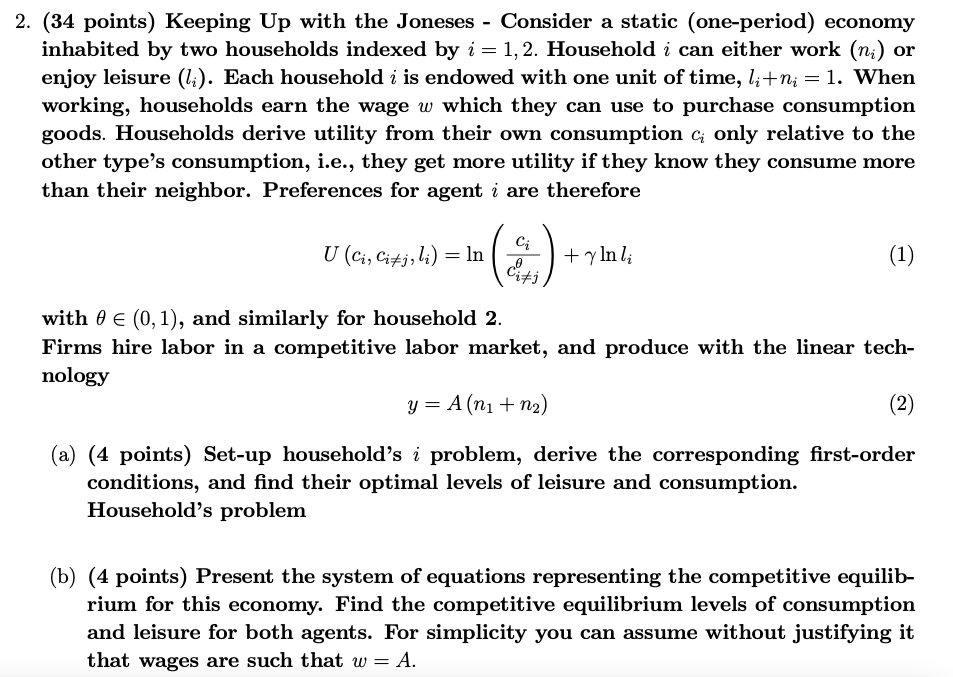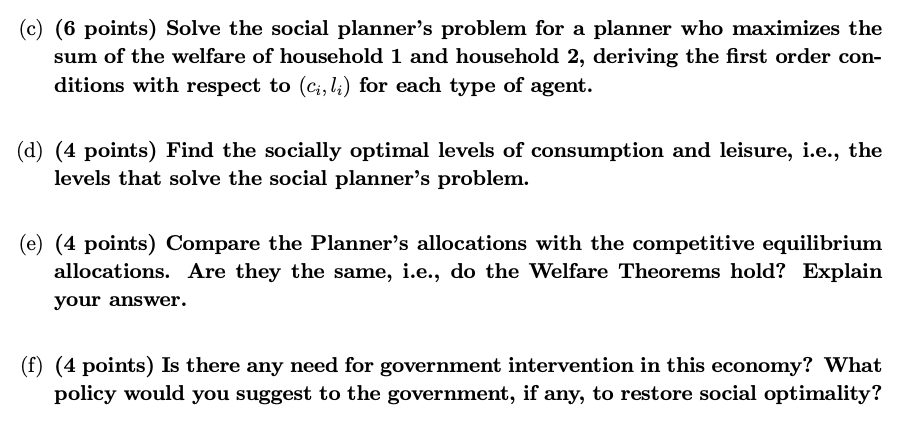


Quantitative Macroeconomics. Thank you!
2. {34 points) Keeping Up with the Joneses - Consider a static (one-period) economy inhabited by two households indexed by 1' = 1, 2. Household i can either work (11,) or enjoy leisure (Lg). Each household 1' is endowed with one unit of time, ,-+n,; = 1. 'W'hen working, households earn the wage m which they can use to purchase consumption goods. Households derive utility from their own consumption c, only relative to the other type's consumption, i.e., they get more utility if they know they consume more than their neighbor. Preferences for agent i are therefore U(C,Csj,5)=lll i +Th15; (1) (tie-,- with 3 E (0,1), and similarly for household 2. Firms hire labor in a competitive labor market, and produce with the linear tech- nology y = 44011 + \"2) (2) (a) (4 points} Set-up household's #2 problem, derive the corresponding rst-order conditions, and nd their optimal levels of leisure and consumption. Household's problem (1)) (4 points) Present the system of equations representing the competitive equilib- rium for this economy. Find the competitive equilibrium levels of consumption and leisure for both agents. For simplicity you can assume without justifying it that wages are such that w : A. (c) (6 points) Solve the social planner's problem for a planner who maximizes the sum of the welfare of household 1 and household 2, deriving the rst order con- ditions with respect to (05,11) for each type of agent. ((31) (4 points) Find the socially optimal levels of consumption and leisure, i.e., the levels that solve the social planner's problem. (3) (4 points) Compare the Planner'l allocations with the competitive equilibrium allocations. Are the},r the same, i.e., do the Welfare Theorems hold? Explain your answer. (f) (4 points) Is there any need for government intervention in this economy? What policy would you suggest to the government, if any, to restore social optimality? (g) (8 points) Implement that policy (introduce it in the consumers problem and find the corresponding competitive equilibrium) and find the values of the policy parameters such that the corresponding competitive equilibrium allocations are the ones that solve the social planner's












